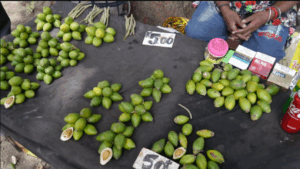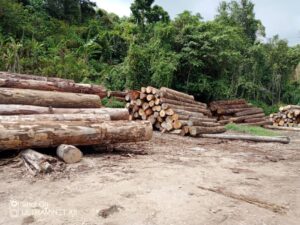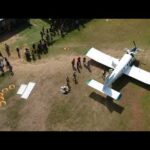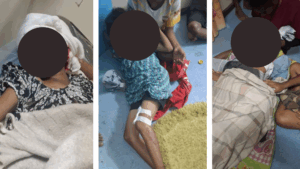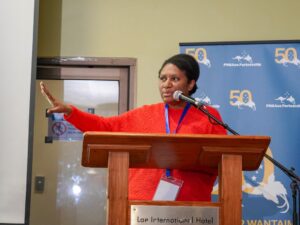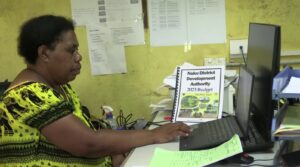How seeing the human face of infant & maternal death in Oksapmin made me an angry person
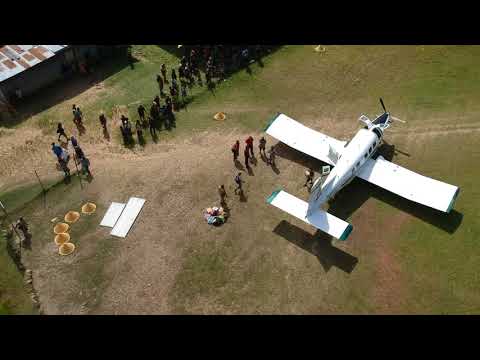
To the west of Telefomin District of the Sandaun Province, is Oksapmin sub-district, as the colonials called it. It used to be well connected with an old limestone track built by the kiaps. But this trek has deteriorated over the years.
We were dropped off at a higher elevation at an airstrip called Bak and from there were trekked for two days toward a Baptist mission station called Tekin. The trek was long and muddy.
When we arrived at a school along the way we met a teacher named, Finn Ruhup. He was a veteran of many years and being a local, he knew his district like the back of his hand. In a place like Oksapmin, the challenges are many. School supplies are difficult to get, teachers didn’t want to come to Oksapmin to work and the maintenance of buildings depended entirely on the willingness of communities to fork out scarce resources to fix government assets.
I asked about rates of maternal and infant mortality. Mr. Ruhup smiled and shook his bearded face.
“It’s bad. But people accept it as a way of life.”
Another teacher sitting next to him joined in the conversation.
“Over here along the track we are able to keep track of how many women and children die. But there are hamlets in places that are difficult to get to. There is no easy way to get there and record how many died. But they die every week and remain unrecorded.”
Oksapmin is extremely mountainous. People live on the ridges of the mountains. The places that appear deceptively close on a map can take anything between six and 12 hours to reach on foot.
“When a child dies, the father takes the baby, wraps the tiny body in ‘skin diwai’ (tree bark) and buries him or her behind the hut,” the teacher said.
There is no ceremony, no ‘haus krai.’ Nobody cries for an infant who dies before his or her first birthday. It’s all too common and people have normalized the trauma of infant death. When a woman faces birth complications, she is carried in a stretcher made from a ‘laplap’ and bamboo poles to the nearest aid post.
It takes many hours. Sometimes it takes days. Many women die along the way.
As we headed to Tekin the next day, a group of men passed us carrying a young mum in the same fashion. They walked hurriedly through the knee deep mud as they passed us. The greetings were hurried and polite. They didn’t stop to shake hands as many of the other people did.
I didn’t find out if the woman lived or died.
Every birth is risk. If a woman continues to bleed after giving birth, getting her to a hospital is really difficult. In Oksapmin, you are at the mercy of the weather. After 12 pm, the clouds cover the mountaintops and rain begins to fall. Visibility for aircrafts drops to zero.
In 2014 and 2015, I was following the development of the Rural Airstrips Authority. At every opportunity, I asked then Minister for Civil Aviation, Steven Davis, about when rural airstrips would be given priority.
At one occasion, at Nadzab airport, he said to me: “Scott, you are always asking me about rural airstrips. Now, I want to ask you: Why you keep asking me about rural airstrips?
I had a long answer for him. But I kept it short. “I grew up in Menyamya and growing up I saw how important rural airstrips were for rural communities. We don’t have that level of commitment anymore from government and operators. I am hoping you will change that.”
These days, I have no patience for consultants and heads of departments who make powerpoint presentations and show fancy statistics to packed coffee sipping audiences in air conditioned conference rooms.
I’ve had enough of that rubbish. Many have never seen the true human face of infant and maternal mortality. Many have never walked those tracks to understand what families feel when they can’t get the youngest child to a hospital.
I think our people deserve better than this crap that we are being fed.
Our public health systems are failing. I’m not making this up. Ask the doctors and nurses. The private pharmacies profit from the ill-health of our people. The medicine they should be getting free from the public health system is being sold to them at exorbitant prices.
We need just K10 million to get the National Cancer Unit in Lae up and running at full capacity. Dr. Ludwig Nanawar at Laloki needs another K10 million to refurbish the Laloki mental hospital.
Enough said! I’m not saying anything about Maseratis.


